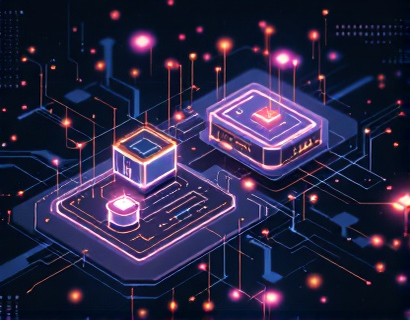Next-Gen Connectivity: Leveraging Advanced Telecom and Internet Solutions for Enhanced Business and Personal Communication
The rapid evolution of telecommunications and internet technologies has revolutionized the way businesses and individuals connect, communicate, and access information. The transition from traditional telephony and broadband to advanced connectivity solutions has opened new avenues for growth, efficiency, and collaboration. This article delves into the transformative impact of these advancements, focusing on the critical role of sophisticated telecom infrastructure and specialized software solutions in enhancing connectivity and communication. The emphasis is on quality and customer satisfaction, ensuring reliable and efficient access to essential digital services.
In the current digital landscape, the demand for high-speed, reliable, and secure connectivity has never been greater. Businesses rely on seamless communication to operate effectively, while individuals depend on it for personal and professional interactions. Advanced telecom infrastructure, including fiber optics, 5G networks, and satellite communications, forms the backbone of this connectivity. These technologies offer unprecedented speeds, lower latency, and higher capacity, enabling a wide range of applications from cloud computing to the Internet of Things (IoT).
Fiber optic cables, for instance, have become the standard for high-speed internet due to their ability to transmit data over long distances with minimal signal loss. This technology supports data rates of several gigabits per second, making it ideal for businesses that require robust bandwidth for video conferencing, large file transfers, and real-time data processing. The deployment of fiber-to-the-home (FTTH) and fiber-to-the-building (FTTB) solutions has significantly improved internet access in urban and rural areas, bridging the digital divide and fostering inclusive growth.
5G networks represent the next frontier in mobile connectivity, promising speeds up to 100 times faster than 4G and latency as low as 1 millisecond. This leap in performance enables new use cases such as augmented reality (AR), virtual reality (VR), and autonomous vehicles. For businesses, 5G facilitates the deployment of smart factories, remote surgery, and real-time analytics, driving innovation and productivity. Individuals benefit from faster downloads, smoother streaming, and more responsive online experiences.
Satellite communications, while traditionally slower and more expensive, are also undergoing a transformation. New satellite constellations with low Earth orbit (LEO) satellites are reducing latency and increasing coverage, making high-speed internet accessible to remote and underserved regions. This expansion of connectivity is crucial for global economic development, enabling access to educational resources, healthcare services, and e-commerce platforms.
Beyond hardware advancements, specialized software solutions play a pivotal role in optimizing connectivity and communication. Network management systems (NMS) provide real-time monitoring and control of telecom networks, ensuring optimal performance and quick resolution of issues. These systems use artificial intelligence (AI) and machine learning (ML) algorithms to predict and prevent network failures, enhance security, and improve user experience.
Cloud-based collaboration tools have become indispensable for modern businesses, allowing teams to work together seamlessly regardless of their physical location. Platforms like Microsoft Teams, Slack, and Zoom have redefined remote work, offering features such as video conferencing, file sharing, and project management. These tools not only enhance productivity but also foster a sense of community and collaboration among distributed teams.
For individuals, advanced internet solutions extend beyond basic browsing and streaming. Smart home devices, powered by IoT, enable users to control lighting, heating, and security systems remotely, enhancing convenience and energy efficiency. Health monitoring devices and telemedicine platforms have also become more prevalent, providing continuous health monitoring and virtual consultations, which are particularly valuable in areas with limited medical resources.
The integration of advanced telecom and internet solutions with AI and big data analytics offers profound benefits. Network operators can leverage these technologies to gain insights into user behavior, optimize resource allocation, and personalize services. For businesses, this means more targeted marketing, improved customer service, and enhanced operational efficiency. Individuals enjoy personalized content recommendations, smarter home automation, and more accurate weather forecasts.
Quality and customer satisfaction are paramount in the deployment of these advanced solutions. Telecom providers and software developers must prioritize reliability, security, and user experience to build trust and loyalty. This involves investing in robust infrastructure, implementing stringent security measures, and offering responsive customer support. Regular updates and maintenance are essential to address emerging challenges and ensure long-term sustainability.
In the realm of business communication, advanced telecom solutions have transformed traditional phone systems into unified communication platforms. These platforms integrate voice, video, messaging, and collaboration tools into a single interface, streamlining workflows and reducing operational costs. For example, IP-based phone systems offer features like call routing, voicemail to email, and conference calling, making communication more efficient and flexible.
For individuals, the shift towards advanced internet solutions has democratized access to information and services. Online education platforms provide flexible learning opportunities, breaking down barriers to education. Telehealth services have expanded access to medical care, especially in rural and underserved areas. E-commerce has revolutionized shopping, offering convenience and a wider selection of products.
The environmental impact of advanced telecom and internet solutions cannot be overlooked. Energy-efficient networks and devices help reduce carbon footprints, contributing to sustainability goals. Additionally, digital solutions enable remote work, reducing the need for commuting and associated emissions. However, the environmental benefits must be balanced with the energy consumption of data centers and the e-waste generated by rapid technological advancements.
As the demand for advanced connectivity continues to grow, the telecom industry faces several challenges. These include the high costs of infrastructure deployment, especially in remote and underserved areas, regulatory hurdles, and the need for continuous innovation to stay ahead of competitors. Collaboration between governments, industry players, and communities is essential to overcome these challenges and ensure universal access to high-quality connectivity.
In conclusion, the next generation of connectivity, driven by advanced telecom infrastructure and specialized software solutions, is transforming the way we communicate and interact with the digital world. By focusing on quality, reliability, and customer satisfaction, these technologies empower businesses to innovate and grow, while enhancing the lives of individuals through improved access to information and services. As we move forward, the continued evolution of telecommunications and internet solutions will remain a key driver of progress and prosperity.










































